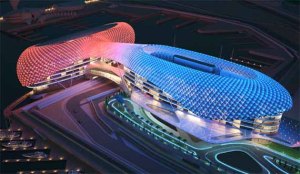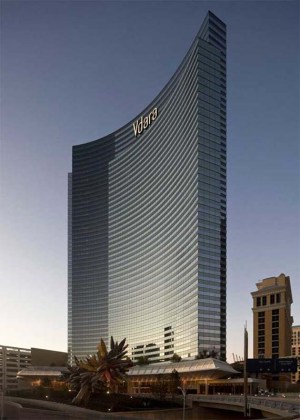Modern Architecture
Modern architecture is generally characterized by simplification of form and creation of ornament from the structure and theme of the building. It is a term applied to an overarching movement, with its exact definition and scope varying widely. In a broader sense, early modern architecture began at the turn of the 20th century with efforts to reconcile the principles underlying architectural design with rapid technological advancement and the modernization of society. It would take the form of numerous movements, schools of design, and architectural styles, some in tension with one another, and often equally defying such classification.
The concept of modernism would be a central theme in these efforts. Gaining popularity after the Second World War, architectural modernism was adopted by many influential architects and architectural educators, and continues as a dominant architectural style for institutional and corporate buildings into the 21st century. Modernism eventually generated reactions, most notably Postmodernism which sought to preserve pre-modern elements, while Neomodernism emerged as a reaction to Postmodernism.
Notable architects important to the history and development of the modernist movement include Frank Lloyd Wright, Ludwig Mies van der Rohe, Walter Gropius, Le Corbusier, Louis Sullivan, Oscar Niemeyer and Alvar Aalto.
Early modernism
There are multiple lenses through which the evolution of modern architecture may be viewed. Some historians see it as a social matter, closely tied to the project of Modernity and thus the Enlightenment. Modern architecture developed, in their opinion, as a result of social and political revolutions. Others see Modern architecture as primarily driven by technological and engineering developments. Still other historians regard Modernism as a matter of taste, a reaction against eclecticism and the lavish stylistic excesses of Victorian and Edwardian architecture.
With the Industrial Revolution, the availability of newly-available building materials such as iron, steel, and sheet glass drove the invention of new building techniques. In 1796, Shrewsbury mill owner Charles Bage first used his ‘fireproof’ design, which relied on cast iron and brick with flag stone floors. Such construction greatly strengthened the structure of mills, which enabled them to accommodate much bigger machines. Due to poor knowledge of iron’s properties as a construction material, a number of early mills collapsed. It was not until the early 1830s that Eaton Hodgkinson introduced the section beam, leading to widespread use of iron construction. This kind of austere industrial architecture utterly transformed the landscape of northern Britain, leading to the description of places like Manchester and parts of West Yorkshire as “Dark satanic mills”. The Crystal Palace by Joseph Paxton at the Great Exhibition of 1851 was an early example of iron and glass construction, followed in 1864 by the first glass and metal curtain wall. A further development was that of the steel-framed skyscraper in Chicago around 1890 by William Le Baron Jenney and Louis Sullivan.
Around 1900 a number of architects and designers around the world began developing new solutions to integrate traditional precedents (classicism or Gothic, for instance) with new technological possibilities. The work of Louis Sullivan and Frank Lloyd Wright in Chicago, Victor Horta in Brussels, Antoni Gaudi in Barcelona, Otto Wagner and the Vienna Secession in Austria, and Charles Rennie Mackintosh in Glasgow, among many others, can be seen as a common struggle between old and new. The work of some of these were a part of what is broadly categorized as Art Nouveau (“New Art”). Note that the Russian word for Art Nouveau, “Модерн”, and the Spanish word for Art Nouveau, “Modernism” are cognates of the English word “Modern” though they carry different meanings. An early use of the term in print around this time, approaching its later meaning, was in the title of a book by Otto Wagner. The fallout of the First World War would result in additional experimentation and ideas. Following out of the experiments in Art Nouveau and its related movements around the world, modernism in architecture and design grew out of stylistic threads originating throughout world.
Style Moderne: tradition and modernism
Greyhound Bus Station in Cleveland, Ohio, showing the Streamline Moderne aesthetic.
Following WWI, a stylistic movement would develop that embraced ideas of both modernism (or at least modernization) and traditionalism. It is characterized by the adoption of the machine aesthetic, glorification of technological advancement and new materials, while at the same time adopting or loosely retaining revivalist forms and motifs, and the continued use of ornament.
In the case of the Art deco, decorative motifs included both those evocative of technology (such as the lightning bolt (electricity) or the tire (the automobile)), and those of the exotic (such as drawing elements from Mesoamerican, African, and Ancient Egyptian designs). Frank Lloyd Wright himself experimented with Mayan Revival, culminating in the concrete cube-based Ennis House of 1924 in Los Angeles.
A later variant, Streamline Moderne, simultaneously both played a role in industrial design and borrowed forms from machines themselves.
More restrained forms with national imagery would also be adopted. In the United States, it took the form of “Stripped Classicism” (alternatively, “PWA Moderne” or “WPA Moderne”) a stark version of the Neoclassicism of Federal buildings earlier in the century.[10] It application ranged in scale from local post-offices to the Pentagon). At the same time (as noted above), the rise in nationalism would be reflected in the Stalinist architecture of the Soviet Union, Fascist architecture of Italy, and Nazi architecture of Germany, what historian Kenneth Frampton termed the “New Tradition”.[11] To a less political extent, such an idea of modernized tradition could also be seen in contemporaneous Mycenaean Revival architecture.
During and following World War II, this broad branch of modern architecture would decline, with the rise of the International Style and other mid-century architecture.
News About Modern Architecture:

